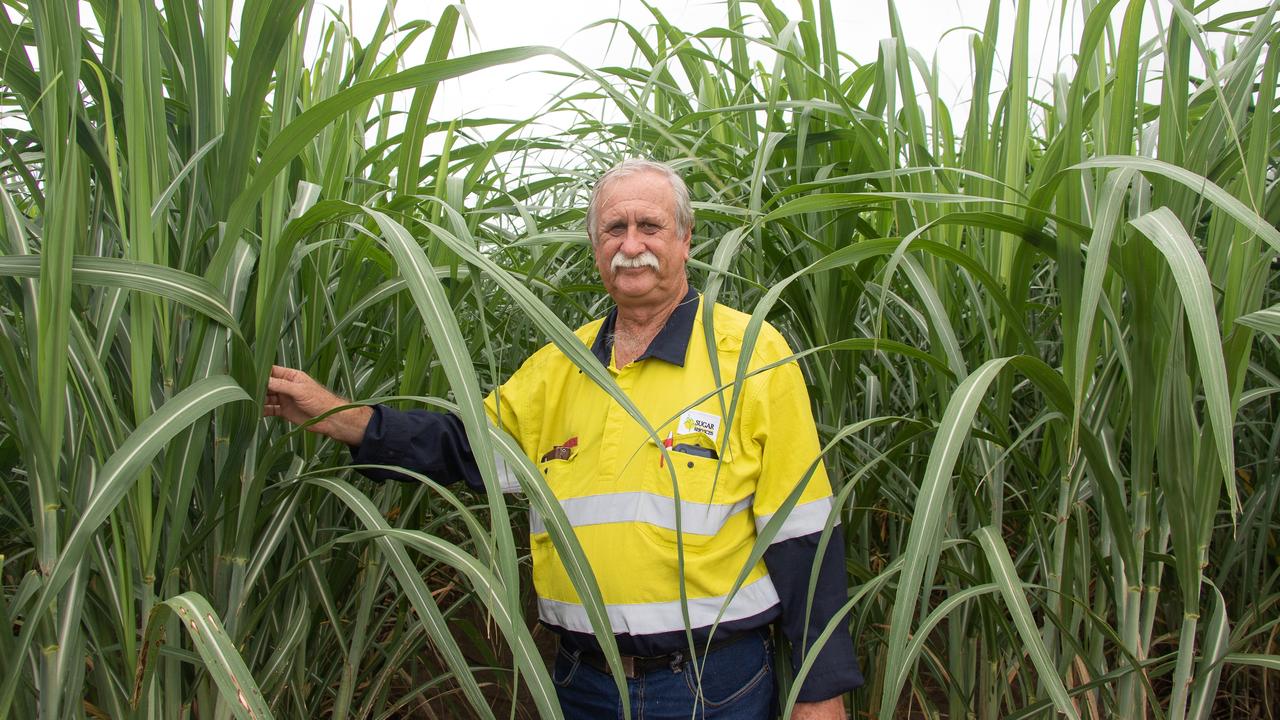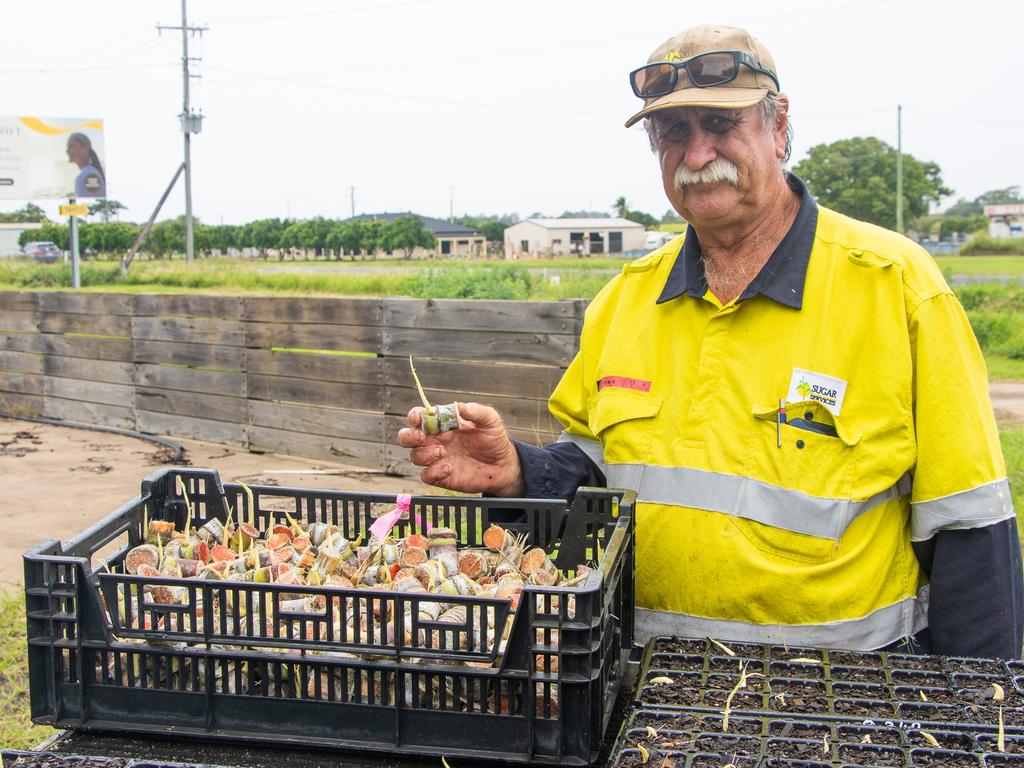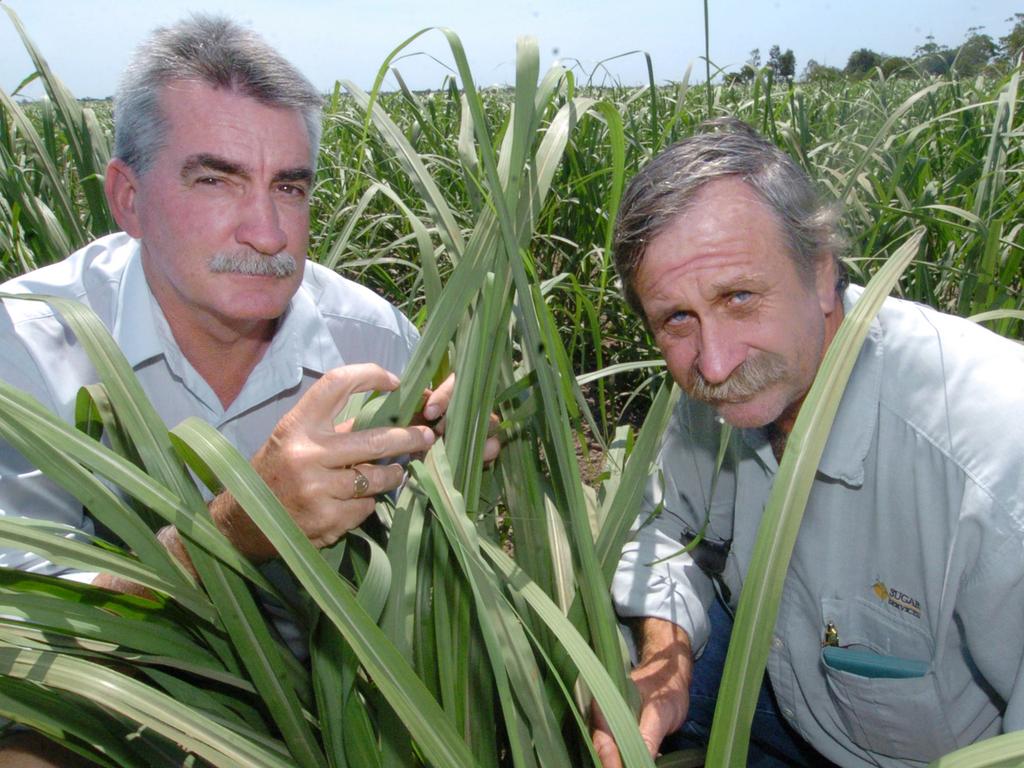Meet the man who has been protecting Bundaberg sugarcane for half a century
A Bundaberg man has spent half a century battling diseases, pests and introducing future-proofing planting processes to the region’s sugarcane industry.

Business
Don't miss out on the headlines from Business. Followed categories will be added to My News.
For half a century Bundaberg man Michael Turner has been on the frontline for sugarcane farmers in the region, battling diseases and pests that have threatened to derail the industry more than once.
Mr Turner’s journey into the world of disease management began in 1974 when he joined his father on a six-month Fiji disease surveillance contract, a choice that would spark a career spanning five decades.
According to Sugar Research Australia, Fiji disease, which is now known as Fiji leaf gall, is a disease that results in slow stalk development and stunted plants that often die in ratoon crops.
A ratoon crop is cut off above ground but roots are left in the ground for the next season.
It is a disease severely detrimental to an industry that relies heavily on ratoon crops.
“At the time, Ken Corrie was the Millaquin/Qunaba cane pest and disease board supervisor, and I joined Jack Purkis’ gang working alongside my dad and five or six others,” Mr Turner said.
“It was a serious job and we worked hard roguing out infected stools, but it was a great team to work with.”
Mr Turner said he spent years eradicating the disease before shifting his focus to monitoring and counting diseased stools as resistant sugarcane varieties were introduced.

By the early 1990s Fiji disease was eradicated from the district.
As the years went on, Mr Turner was appointed to the supervisor’s role for the Millaquin Cane Protection and Productivity Board, where he continued to monitor and manage pests and diseases across the region.
“Soldier fly, cane grubs and pink earth pearls required ongoing monitoring, and in the early 2000s, orange rust was found in the district,” he said.
“Orange rust took away variety Q124, which could have been a promising commercial variety for growers in this area.”
As deregulations of the industry began to shake things up for sugarcane farmers across the state the Bingera, Fairymead and Millaquin pest boards came together to form the Sugar Services and partnered with Sugar Research Australia (which was known as BSES at the time) to provide services to growers.
In 2006, Mr Turner and his team were faced with a new and devastating challenge: sugarcane smut.

The disease remains one of the most serious to impact sugarcane crops, and as a result Bundaberg Burnett growers lost several commercial varieties of sugarcane, though through luck and hard work truckloads of resistant varieties were transported to the region to fill the vacuum.
As the decades rolled along, Mr Turner has watched the sugarcane industry shift and change, impacted by deregulation, price changes and farmers leaving the industry.
In more recent years Mr Turner has battled new diseases including yellow canopy syndrome and worked with growers to introduce new methods of growing cane to better suit an ever changing industry.
“I’ve learnt to listen and give growers time to express their worries, then when the air is clear, sometimes have a cup of tea, then go to the field and plan a strategy to remedy whatever was happening there,” he said.
More Coverage
Originally published as Meet the man who has been protecting Bundaberg sugarcane for half a century








